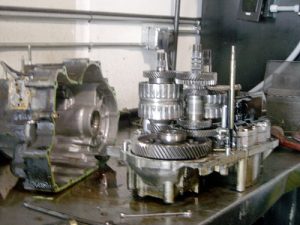
What is a transmission solenoid?
The solenoid is a part in a transmission that includes a coil of wires that creates a magnetic field, a plunger that connects to a valve in the valve body, and a spring that holds the plunger in place. All of the parts of the solenoid work together to allow transmission fluid to flow through the system as it should. Each piece must perform its job specifically in order for everything to work right; if a part breaks or weakens, you recognize it when you experience issues in shifting gears.
How does it function?
The function of the solenoid is very simple: open and close the valves to allow in hydraulic fluids. The first thing that happens when the solenoid is operating is the creation of a magnetic field: the coil of wire is energized and creates the field. This field in turn pulls the plunger toward it and collapses the spring, allowing the valves to open up and let the transmission fluid into the system. When the magnetic field disappears, the plunger and the spring are returned to their original positions.
Why is it important?
The solenoid regulates the amount of fluid that is allowed to flow through the transmission system at any given time. When this regulation is disturbed in any way, you will find that your vehicle is running too much or too little amounts of fluid. If the transmission is receiving too much or too little fluid, the vehicle may experience some internal damage. Fortunately, if there is a problem, you will notice symptoms such as difficulty shifting gears.
Does it ever malfunction?
Though many have been told that a malfunctioning solenoid is a rare occurrence, it can malfunction or break and require repair or replacement. Some of the common issues you can have with the solenoid include stuck plungers, broken or melted wires, or a broken spring. If the problems arise with the plungers or the wires, you can replace just those pieces; if the spring breaks, however, you will need to replace the entire solenoid part.
The solenoid is typically one of the very last parts that someone will think about when approaching their own analysis of transmission problems even though it plays just as large a role as other parts. Transmission solenoids are a small and pretty durable, but they need monitoring just as any other part of the vehicle.
Topics: Transmission Problem Symptoms
